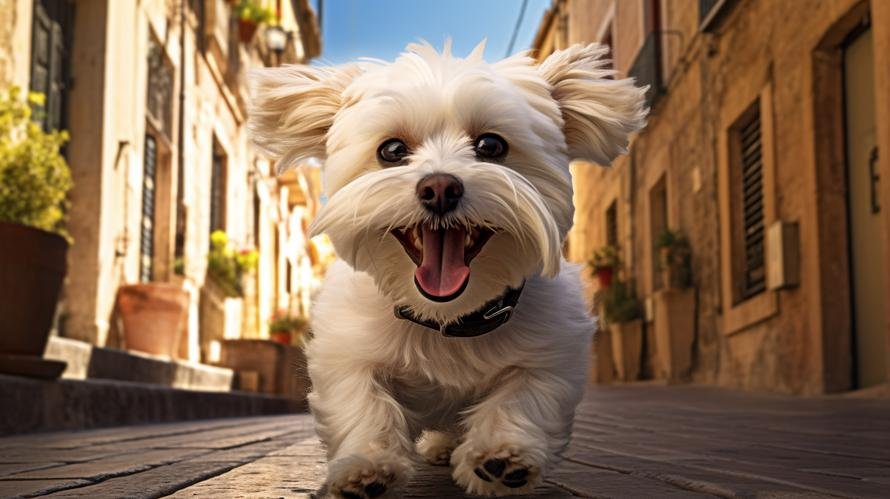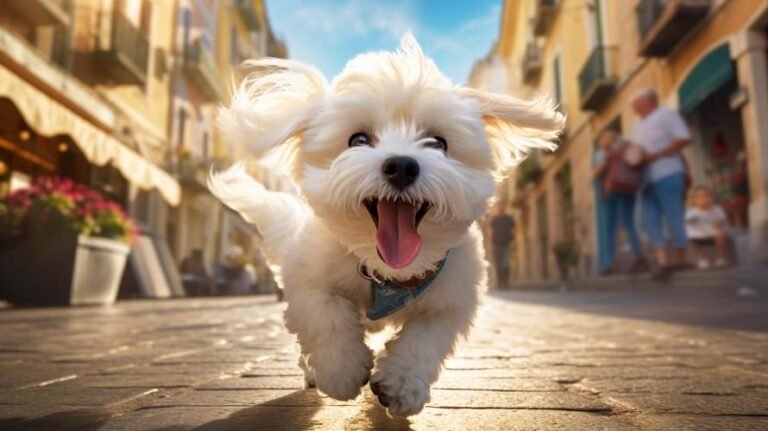Did you know that the Maltese dog has links to the ancient world? Also called the ‘Ye ancient dogge of Malta’, the Maltese has a long and rich history, with references made to it in the works of Aristotle about 2,300 years ago! This little fireball of cuddly energy has a lineage as impressive as its snow-white fur. The question we’re answering today – does a Maltese shed a lot? Let’s sniff out the real story behind this cloud of fluff!
Some believe that Maltese dogs are ‘non-shedding.’ However, that’s not exactly true. Though the shedding is extremely minimal, it is not a zero-shedder. The Maltese dog has hair, not fur, which grows continuously, much like human hair. This is one of the few dog breeds with this hair type. Unlike most other breeds, these dogs don’t have an undercoat that sheds seasonally. Instead, they lose hairs individually.
If you’ve ever had human roommates, you already know human hair also does this. It tends to just fall out here and there, rather than all at once, like when “Fluffy” decides to blow coat right when your in-laws are due for a visit! These single hairs land on your clothes, the furniture, and, of course, the bathroom floor. So, you see a similar pattern with a Maltese.
But wait, here’s why you might feel like your Maltese is a non-shedder. Their hair usually falls out when you brush them, much like how we humans lose hair while brushing. This lessens the amount of hair you find around your household, making it seem like they don’t shed.
So if you have allergies, or you just aren’t a big fan of finding fur on everything you own, a Maltese might be a good choice. With consistent and proper grooming, the shedding is negligible and won’t drastically affect your home or wardrobe.
Talking about grooming, this brings us to an essential piece of advice for Maltese owners. Regular and proper grooming is vital to manage, and limit, their hair loss. Without regular grooming, the Maltese’s hair will become matted and tangled, causing more hair loss and discomfort for the dog.
A well-groomed Maltese is a sight to behold, with its white, silky hair flowing gracefully as it parades around. A good brushing routine (daily is best, but a few times a week can work too) with a comb or a slicker brush that reaches the underlayers of their hair can aid in minimizing their minimal shedding.
Another tip to limit shedding is to maintain a healthy diet. Just as with humans, a pet’s outer appearance often reflects its internal health. Foods rich in Omega-3 and Omega-6 fatty acids can promote healthier skin and hair, reducing hair fall. And of course, regular hydration is a must!
Lastly, regular check-ups with the vet can help diagnose any internal issues leading to excessive shedding. While the Maltese is generally a healthy breed, they can be prone to skin conditions like dermatitis which can cause more shedding than usual.
In conclusion, while the Maltese isn’t completely a non-shedding breed, it sheds significantly less compared to most other dogs. And with consistent grooming habits, a healthy diet, and regular vet check-ups, you can ensure that shedding remains a slight inconvenience rather than a significant concern.
Now that you are bracing yourself for Maltese ownership or already in the fluffy club, remember that the joy and companionship of owning a dog outshine the minor issues of shedding. After all, what’s a little fur among friends? Especially from a dog with such a rich history! Just think- when you’re brushing out those beautiful white locks, you’re brushing the same type of hair that ancient Romans and Greeks found similarly adorable. And that’s a history lesson worth having around.



